Diesel History Retrospective: Autocar, An American Survivor
Dozens of manufacturers surrounded the booming steel town of Pittsburgh, Pennsylvania, at beginning of the last century. The age of modern marvels had already lasted half a century by then and the strained beginnings of a mechanized transportation system had begun. The recent bicycle craze was beginning to ebb, and a sudden interest in motorized vehicles began cropping up in the larger metropolitan cities.
A small industrial firm formed by the Clarke brothers opened its doors in the above sprawling metropolis in 1897 under the original banner of The Pittsburgh Motor Vehicle Company. Its primary product, like many others, was a mechanized platform now being widely dubbed the motorcar or automobile depending on where you were located on the American landscape. Their original product offerings were a three-wheeled motorized tricycle and a light four-wheeled motorized carriage dubbed the “The Pittsburger.”
Within a short 24 months the firm outgrew its cramped original quarters and moved to the new suburb of Ardmore. In 1900, for the 1901 model year, the company’s first runabout was launched—the Autocar. This single-cylinder, chain-driven platform was produced a mere 27 times. During this time period other family members were brought into the young organization. Brother John became corporate secretary and another brother, James, found himself a board member. In keeping with rapid industry model improvement, 1904 Autocar models featured new four-passenger seating and offered an optional snap-down tonneau cover arrangement for in-climate weather. These carriages continued to utilize “tiller” steering and were marketed with a factory retail of $1,700. Original Autocar platforms were powered by a horizontally front-mounted two-cylinder unit producing 11 horsepower. A standard “three by the knee” manual transferred power to the rear wheels.
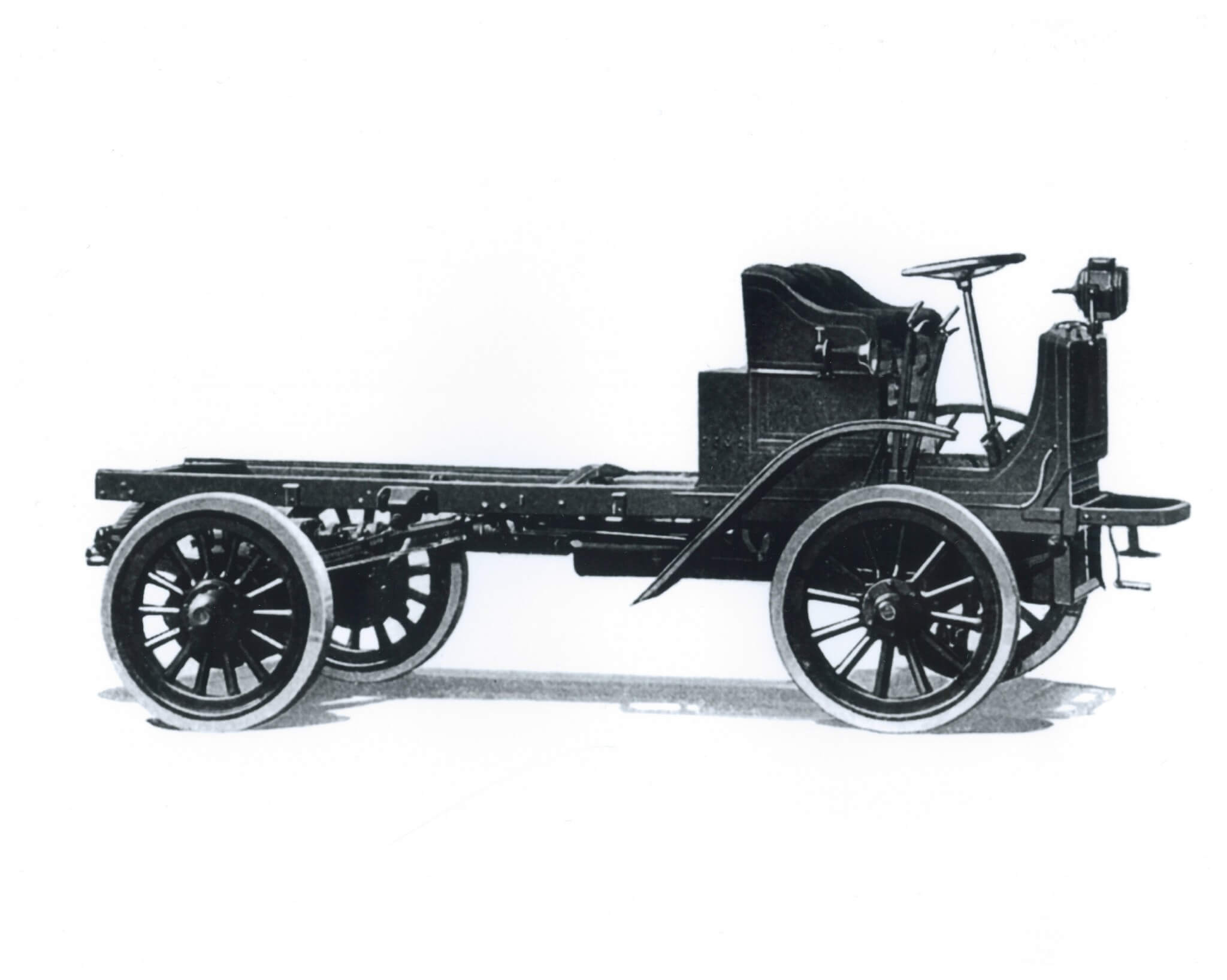
The company’s engine arrangement was unique, in that front engine mounting was not universal as yet, with many manufacturers still mounting their engines under the seats. In-line units were also rapidly becoming standard fare. In any case, the 11-horsepower radical mill had to pull a wood and steel-constructed 1,675-lb. platform through “hill and dale.” Though the firm now offered a few model variants by 1905, it became apparent that the low-priced leader, the Type-10 Runabout, was by far the best seller at $1,000. The higher priced $2,250 Touring cars were reduced to 500 units a year and by the end of 1907, new directions for profit were planned. Commercial trucks were introduced this same year and within 36 months the firm was totally engaged in truck production.
Lewis S. Clarke, being one of the company founders, was quite innovative in his mechanical engineering work, developing his patented production porcelain process for automotive spark plugs for petroleum-fired engines. He later sold the process was to Champion Spark Plug. He also worked on perfecting a standardized driveshaft system for motorized platforms, replacing the established chain-driven units of the period. Improved engine oil circulation systems followed.
A more widespread claim to fame was Clarke’s insistence of placing the automobiles operator on the left side of the vehicle platform. The concept became a worldwide standard and thus we now, with a few exceptions, accept driving on the right side of the highways and byways of the globe.
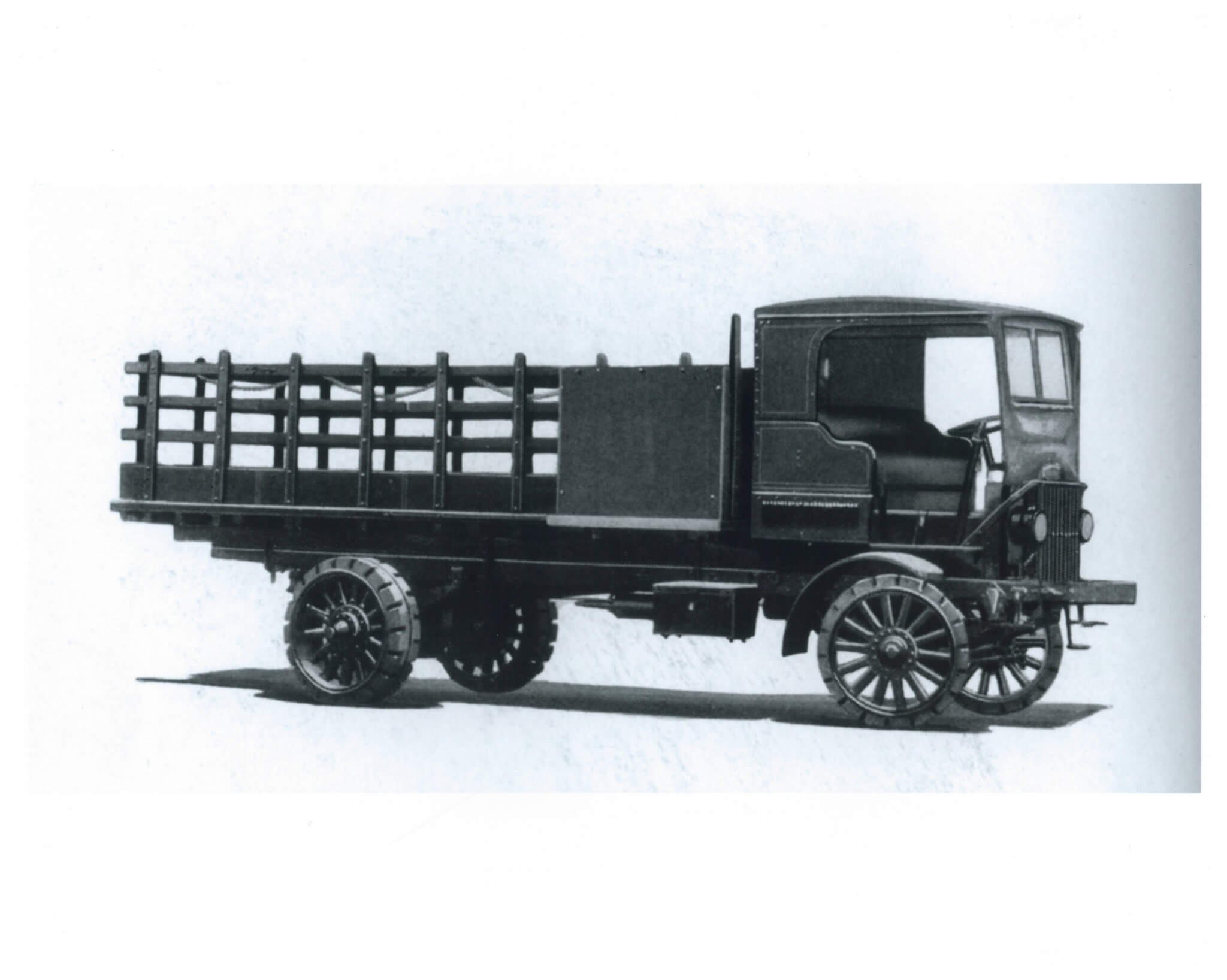
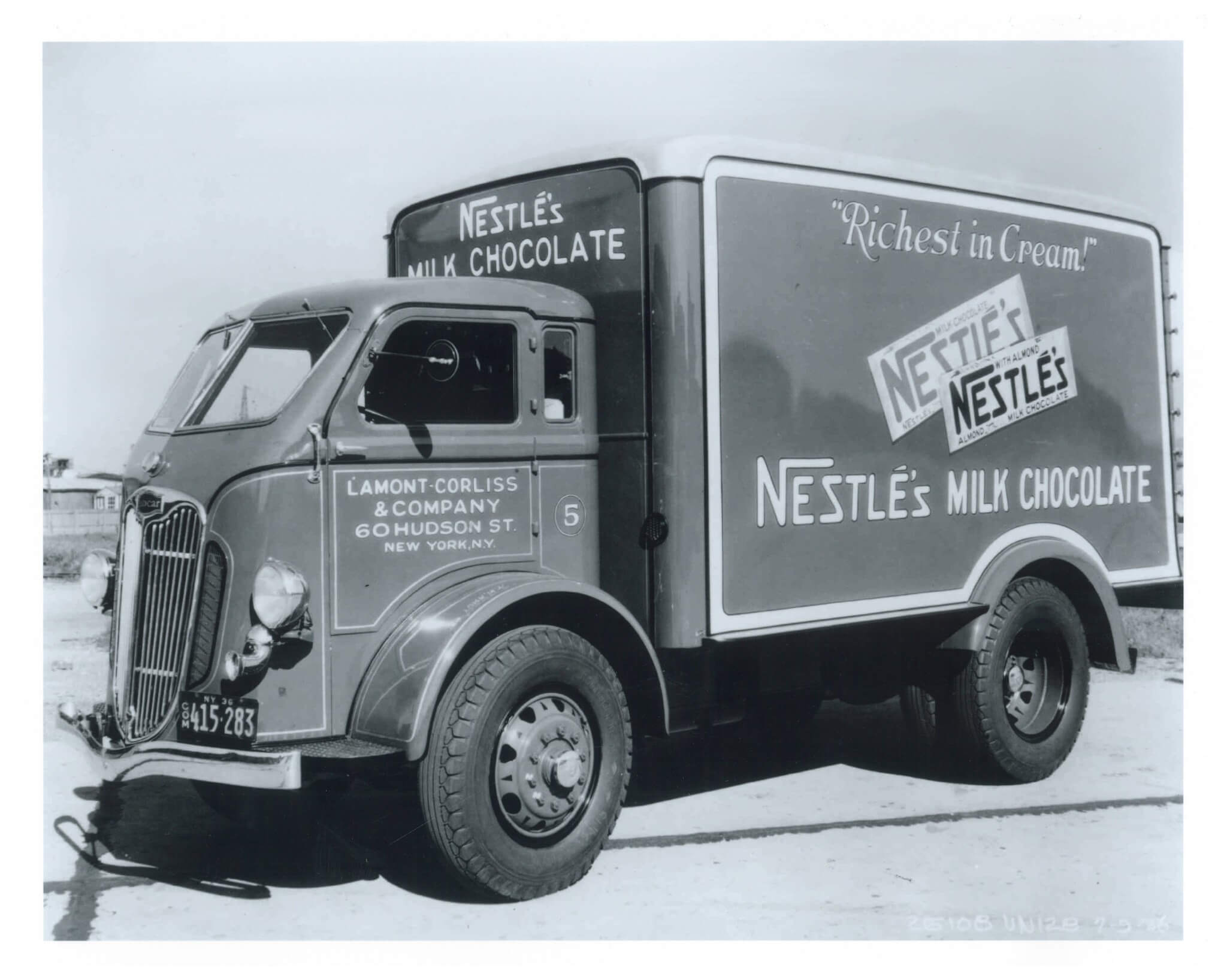
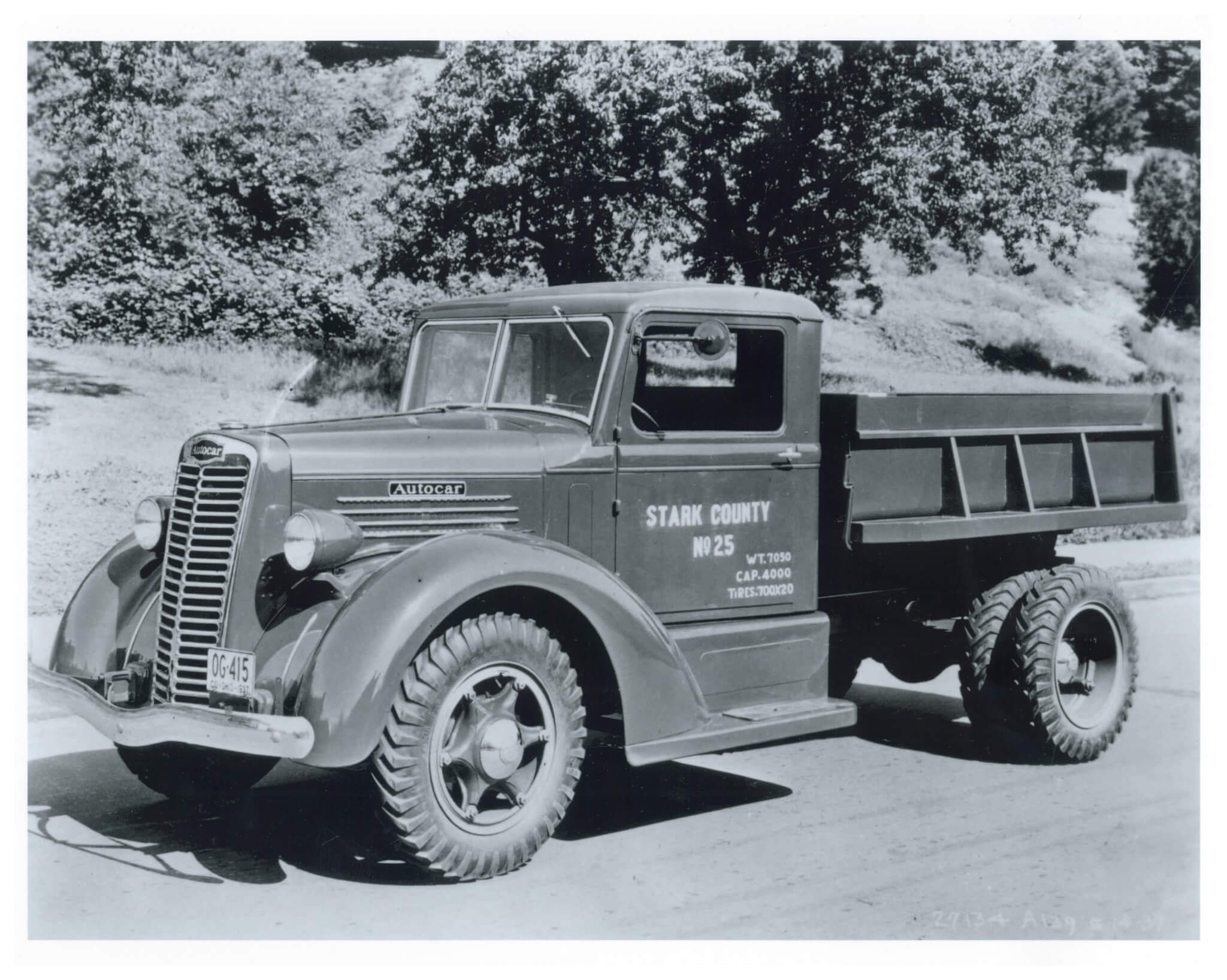
Autocar launched its first motorized light delivery commercial truck platform, combining a 1 ½-ton capacity with a 97-inch wheelbase. The company not surprisingly utilized its production two-cylinder mill mounted with “the under the seat design” as was industry standard during this period. Some 30,000 of these light-duty units were produced. In 1920, a new 2- and 5-ton platform was developed, equipped with a four-cylinder inline mill to replace the earlier 1 ½-ton unit. As greater load capacities led to greater GVW, Autocar truck chassis were lengthened and more powerful gasoline engines were created in four and six-cylinder versions. Autocar also developed a new “cab-over” engine design that proved extremely popular.
By the decade’s end, the company focused on conventional platforms as well as the launch of their famous “Blue Streak’ inline six-cylinder engine. Other offerings were added to the balance sheet: fully enclosed cabs, proprietary axles and transmissions, along with a new four-wheel-drive system. The company also targeted the extreme-duty vocational truck market. In 1929, the firm delivered 3,300 units, but with the crash of the Great Depression production fell to a mere 1,000 deliveries, less than one third of the growth years. Autocar, of course, was not alone.
Autocar entered the 1930s with the creation of a new platform aimed directly at new state truck and trailer length regulations. The new platform, dubbed the U-90-T or simply the model-U, was launched in 1935. It was considered by the trucking industry of the period to be one of the first true cab-over designs, and the most popular in the United States. The company also added diesel powerplants as optional equipment, generally supplied by Cummins.
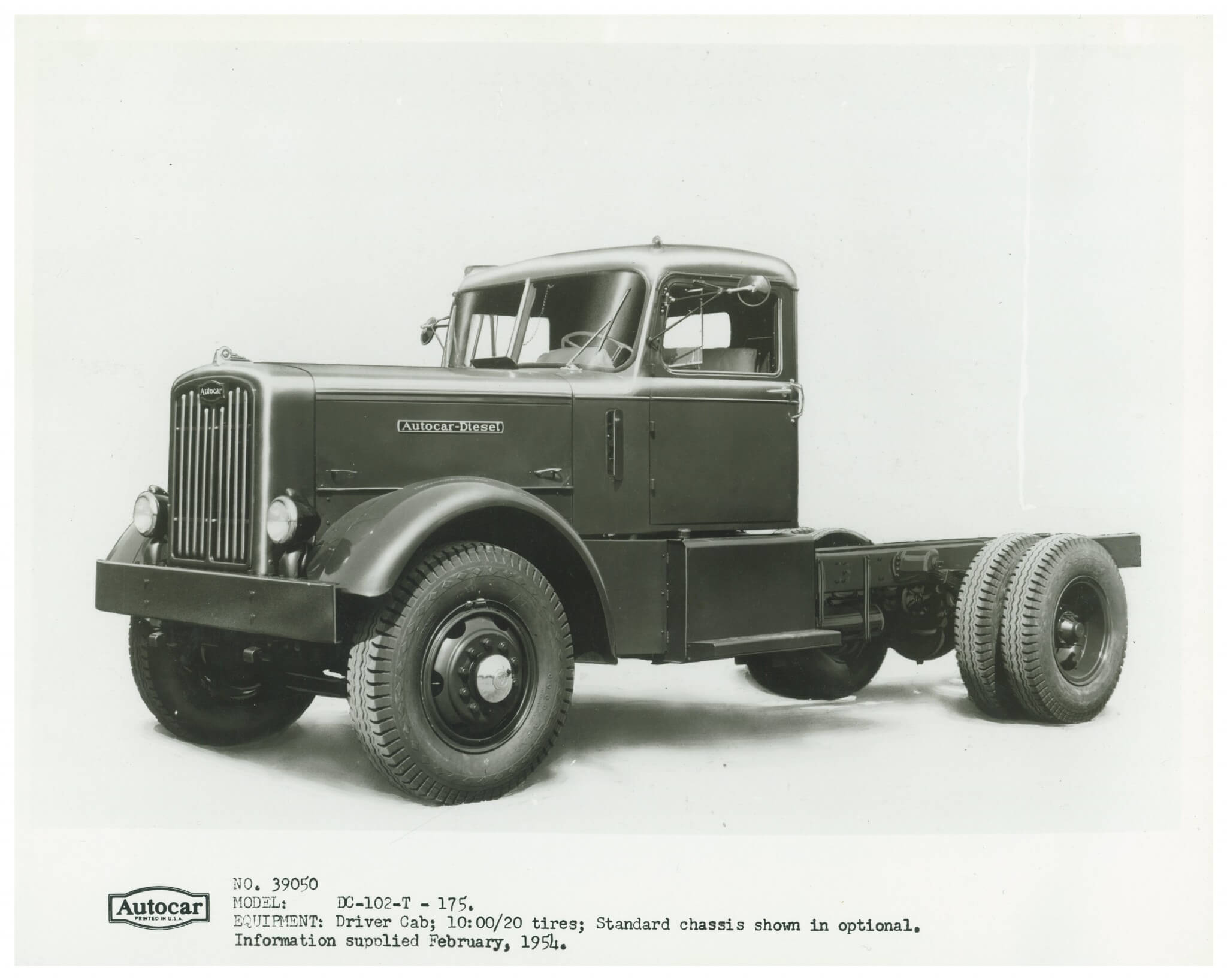
WAR CLOUDS AGAIN
With war clouds developing in Europe and the Far East, the company marketed its “tough truck” reputation to the military and its allies. Company production was transferred to the output of government speced half-tracks, all-wheel-drive heavy trucks and standard model conventional platforms with a broadened color chart. During the hostilities the firm supplied 70,000 units for the effort. At the war’s conclusion, the company took its “Tough Truck” reputation back into the civilian market, re-focusing once again on the severe-service sector. During the Korean Conflict, the company finally left its established wood and metal-constructed cabs with the production of an all-steel version in 1950. Autocar also began expanding its dealer sales and service organization to 100 outlets. The automotive and truck industry took a severe downturn during this period largely in part to a severe shortage of steel and related components. Autocar, being one of the few independents left, sold out to White Motor Company of Cleveland, Ohio, in 1953.
THE WHITE YEARS
Autocar’s brand recognition and proven reputation as a “Tough Truck” platform in the Class 8 marketplace made it a prime candidate for purchase. White’s management had immediate plans for their newly acquired brand. Now part of White’s “Big Four” line, their first production “tweek” was the elimination of Autocar’s famous “Blue Streak” engine series to be replaced with White’s conventional “Mustang” powerplants. In addition, Autocar now would be marketed as a custom-ordered brand and produced in a new upscale environment in Exton, Pennsylvania. This new facility opened in 1954. Tragically, in 1956, the brand’s earlier hometown manufacturing facility burned to the ground during its demolition, almost burning down the surrounding city with it. Press reports detailing the fire only added more gloom to the unemployed atmosphere. Autocar fire apparatus platforms fought the massive blaze throughout, but to no avail.
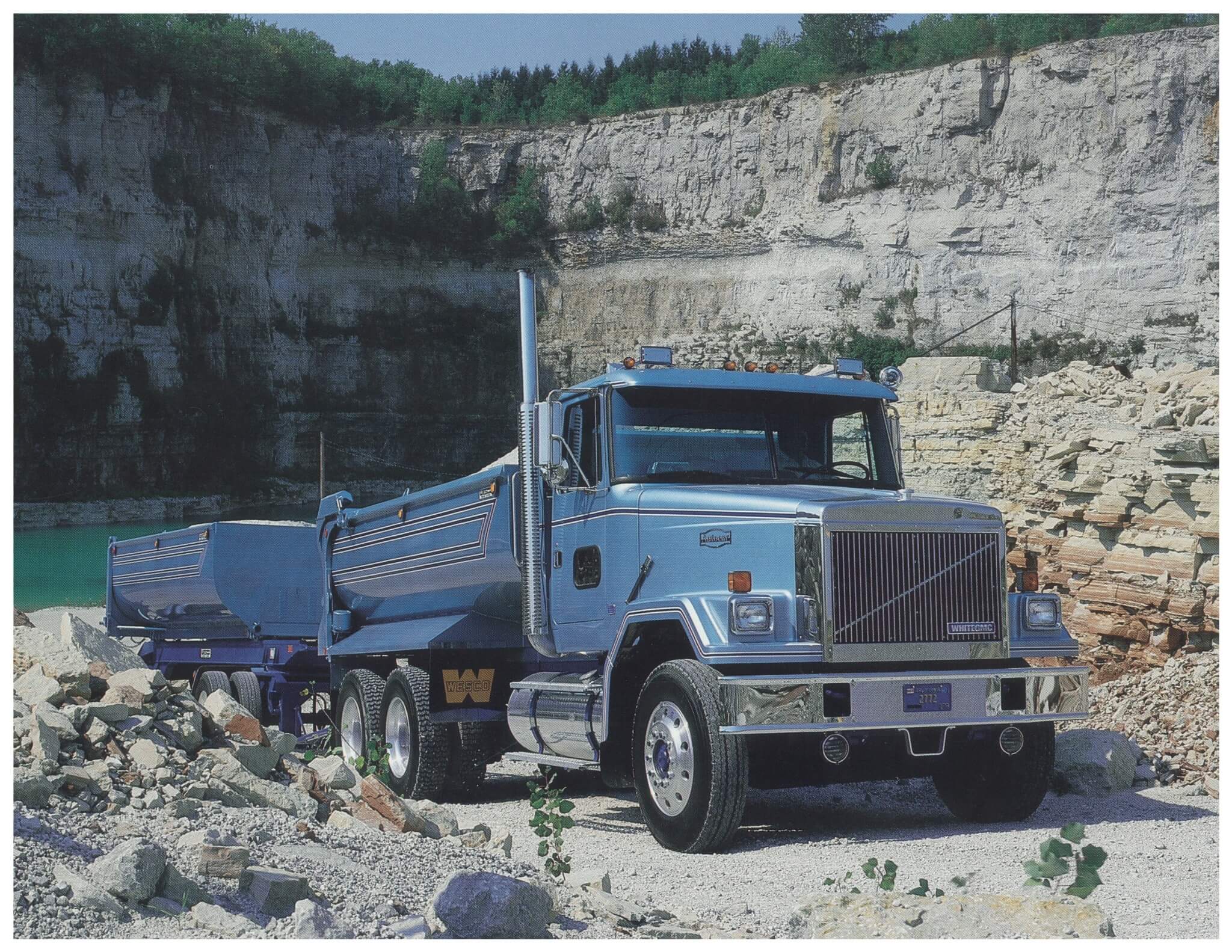
Customer engineering now was the new “rule of thumb” at Autocar with each unit sold as a specialized platform. The new moniker of “World’s Finest” began appearing in the corporate literature. The firm further expanded its presence in the “severe service” market in 1957. These ultra-heavy-duty platforms now provided higher gross vehicle weights with payloads reaching 40 tons. A new AP Series was launched for on- and off-road construction applications related to mining, logging, and oil and gas pipeline operations. Autocar’s A Series featured an emphasis on overall weight reduction with the use of aluminum in both frame and cab components in the late 1950s. A further example of the firm’s heavy-duty commitment was the production of the AP19 produced in 1964. This platform featured a 30,000-lb. front axle combined with rear units rated at 200,000 lbs. The platform was originally powered by a Cummins V-12, producing 525 horsepower. The last conventional gasoline-powered Autocar platform was produced in 1965.
CHANGES, AGAIN
Approaching their third decade, White Motors moved Autocar production operations west from Pennsylvania to Ogden, Utah. Within a very short year after arrival, White Motors declared bankruptcy and the Autocar brand was sold along with parent White Motors to Volvo of Sweden. Autocar now became a division of Volvo, and the new Volvo White Truck Corporation was the result. The new parent now produced truck platforms under the White and Autocar brands with the later marque producing a majority of cab-over units, which were also produced under the Western-Star brand for the Canadian market. This sales activity continued until the early 1990s.
Volvo, determined to expand its presence in the North American heavy truck market, continued to add American nameplates to its worldwide organization, In 1986, the beat went on with the purchase of General Motor’s heavy-duty truck business. After the filing of the paperwork, the result now was the creation of Volvo GM Heavy Truck Corporation. Though the Autocar brand remained in the product mix, the last Autocar-branded heavy-duty platform to utilize the famed “Driver Cab” launched in 1950 rolled down the assembly line in early December 1967. From this period on, all future Autocar-branded units would share a common cab structure with all Volvo GM heavy-duty truck platforms.
The new combined generation of White GMC and Autocar platforms hit the market in 1988. The original Autocar-branded bowtie was basically all that was left for observers to note. The proud badge was mounted on the sides of the hood, with the White GMC label leading the way affixed on the grille. Interestingly, a very short time later, the Autocar logo re-appeared on both the top of the grille as well as the hood sides. In 1996, the firm changed its trademark again to Volvo-Autocar.

THE BUYOUTS CONTINUE
For a 20-year period, Autocar remained a part of the Volvo truck empire, though it had become relegated to a small severe-service market niche. In 2000, the parent concern withdrew the famous brand from the market. The reasoning was sound as Volvo again was in the quiet process of acquiring Mack Truck of Allentown, Pennsylvania. Mack at the time was owned by the French automaker Renault. Mack also had a popular line of cab-forwards competing directly with Volvo-Autocar. Heavy truck profit margins being what they were, clinched the decision. At this point in time, both marques had an excellent following in the severe-service, refuse-handling market; definitely a small segment, but an important one for the firm. With this latest merger another duplication of offerings was not cost effective.
In 2001, a group of private investors led by Andrew Taitz approached Volvo to agree in principle to sell select vehicle platform designs, intellectual properties, and the Autocar brand rights to the new American firm of Grand Vehicle Works Holdings LLC, located in Highland Park, Illinois. The agreement was aimed directly at Volvo-Autocar’s low-cab-forward Xpeditor severe-service Class-8 platform.
The new concern’s business plan was to utilize this proven unit to act as a profitable cash generator and expand its market base with its established custom engineering into other applications. In 2003, the firm moved again into new quarters, this time in Hagerstown, Indiana. Autocar continued its growth in the refuse market, but now produced severe-service concrete-pumping platforms, mobile crane units, mobile road and highway stripers, and specialized natural gas vehicles. Another niche platform has also been directed toward yard tractor applications in large consolidated motor truck supply and warehouse depots.
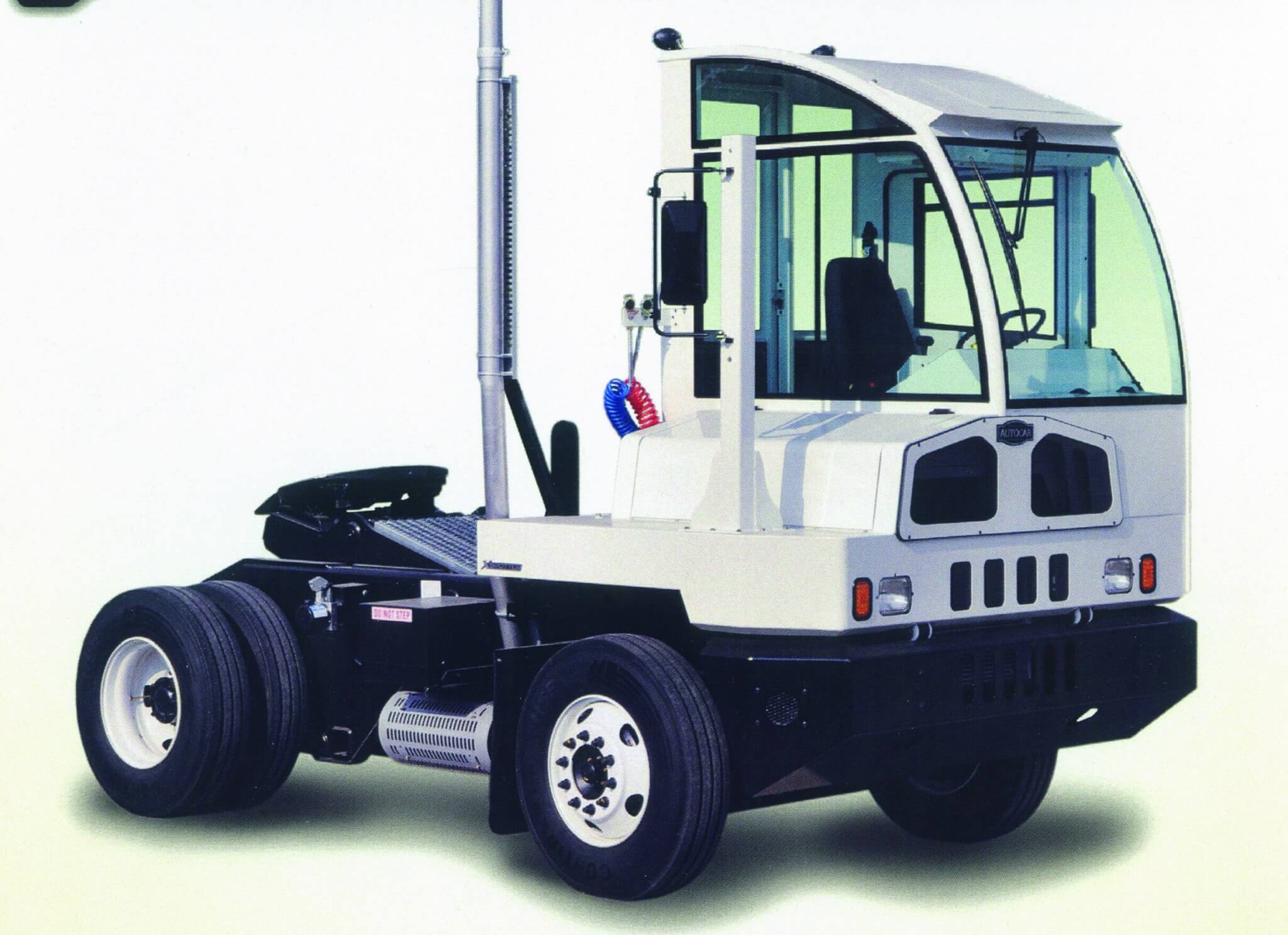
Continuing on the brand’s established engineering heritage of more than a century, the firm has developed and introduced many industry innovations, including body chassis interface, integrated control systems, and comfort-driven ergonomic cab structures. Autocar claims its Xpeditor ACX cabs are the industry’s roomiest and most durable, featuring without qualification an unmatched offering of safety, ease of use and convenience. The firm also notes and is proud of the fact that it offers the only low-cab-forward platform in the market entirely manufactured with specialty coated, double-sided, fully welded galvanized steel.
Facing the future and keeping the government happy, the firm also produces its E3 hybrid drive Class-8 severe-service platform designed and engineered to reduce fuel-consumption in frequent stop-and-start applications. Tougher diesel emission standards again are the key here, particularly in high-density municipal and seaside port of entry operations. The firm has both endured and continues to provide unique engineered platforms for specialized users. DW











